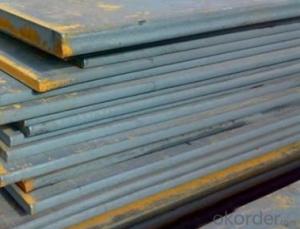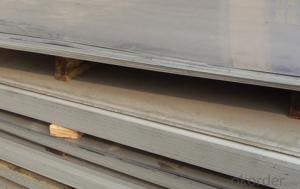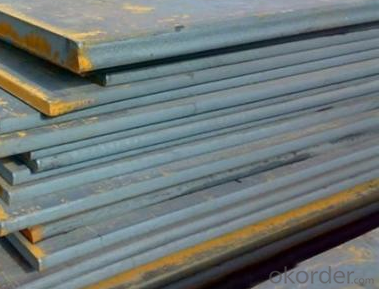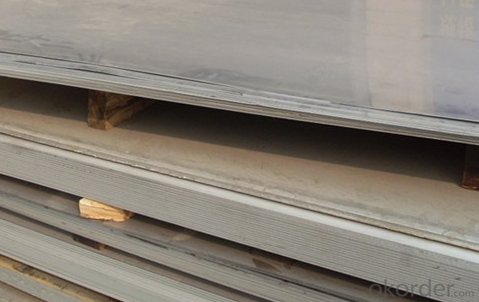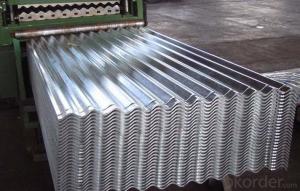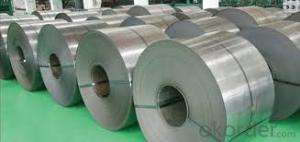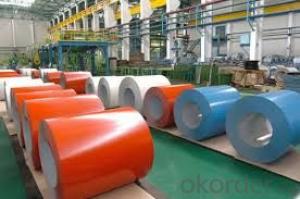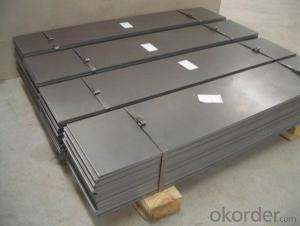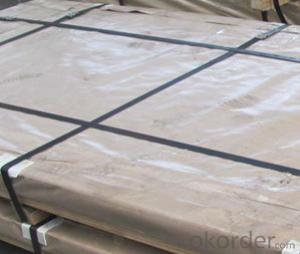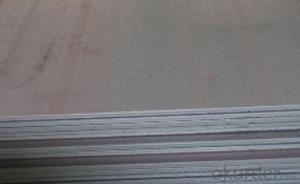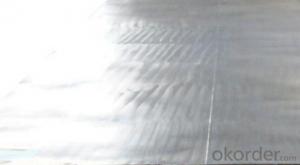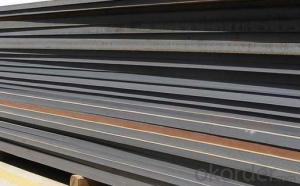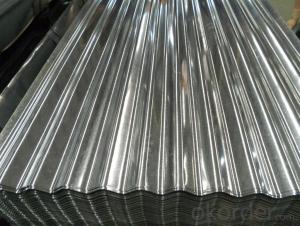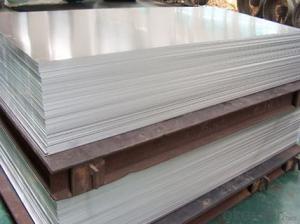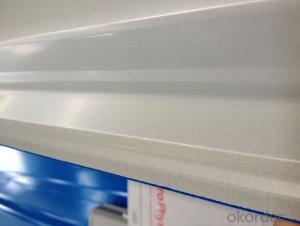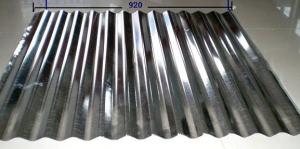Mild Carbon Steel Sheets A36 CNBM
- Loading Port:
- Qingdao
- Payment Terms:
- TT OR LC
- Min Order Qty:
- 10 pc
- Supply Capability:
- 30 pc/month
OKorder Service Pledge
OKorder Financial Service
You Might Also Like
Quick Details
| Grade: | 300 Series | Standard: | JIS, AISI, ASTM, DIN, EN | Length: | 1000-6000 |
| Thickness: | 0.5-100mm | Width: | 1000-2000 | ) | |
| Brand Name: | putan | Model Number: | Q235.Q345 | Type: | Plate |
| Application: | Construction plate,boiler plate,container plate,shipbuilding plate,all | Certification: | BV | type: | plate |
Packaging & Delivery
| Packaging Details: | Export standard package,bundled or be required. The inner size of container is below: 20ft GP: 5.8m(length) x 2.13m(width) x 2.18m(high) 25tons about 24-26CBM 40ft GP: 11.8m(length) x 2.13m(width) x 2.18m(high) 25tons about 54CBM 40ft HG: 11.8m(length) x 2.13m(width) x 2.72m(high) 25tons about 68CBM |
| Delivery Detail: | 7-15 days after receiving the deposit |
Specifications
Q235 Carbon sheet
Original :China
thickness 0.5mm~100mm,
coil steel Processing.
MOQ : 25TON
Carbon Steel plate
Product | SS400 carbon steel plate price |
Standard |
GB/T700-2006,ASTMA283/A283M-03,ASTMA572/A572M,JISG3101-2004,SS400, JIS G3135-1986,SPEC590,EN10025/2-2004,S235JR or S235J2,E335 or S335JR…
|
Width | 500-2000mm |
WT | 0.5 –60mm |
length | 2000—6000mm |
Applications range |
Construction plate,boiler plate,container plate,shipbuilding plate,all kinds of industries and manufacturing structural applications.
|
MOQ | 25 ton / according to customers' requirement |
Quality | good attestation of honour choosed by customers SGS |
Supply capability | 5,000 ton / month |
Key to success | advanced technique and service and low price |
Authentification | ISO9001:2008 |
Market | North/South America, Europe, Asia,Africa,Mid East,ect. |
Packaging |
Standard seaworthy packing / according to the customers’requirement
|
Port | |
Delivery term |
T/T,L/C 30% deposit the balance before shipment,the balance paid by the copy of B/L OR L/C at sight
|
Delivery time | In 15 – 45 days after contract |
- Q: What are the different types of steel sheet patterns?
- In various industries, one can find a variety of steel sheet patterns commonly used. Among the most popular ones are: 1. Plain Steel Sheet: This type of steel sheet pattern is the simplest and most basic. It has a smooth surface without any visible texture or pattern. 2. Diamond Pattern Steel Sheet: The surface of this steel sheet is embossed or raised in a diamond-shaped pattern. It is commonly used in applications where slip resistance is important, such as walkways and stair treads. 3. Perforated Steel Sheet: These sheets are created by punching holes in the steel to form a pattern of openings. They are commonly used for ventilation, filtration, and decorative purposes. 4. Corrugated Steel Sheet: With a wavy appearance due to parallel ridges and grooves, corrugated steel sheets offer added strength and rigidity. They are suitable for roofing and siding applications. 5. Checkered Steel Sheet: This type of steel sheet features a pattern of raised squares or rectangles, similar to a chessboard. It is commonly used for flooring, stairs, and decorative purposes. 6. Hammered Steel Sheet: Hammering the surface of the steel sheet creates a unique texture, giving it a rough and rustic appearance. It is often used for decorative purposes, adding a distinct visual appeal to various applications. 7. Brushed Steel Sheet: Achieved by rubbing the surface with an abrasive material, brushed steel sheets have a brushed or satin-like finish. This pattern provides a smooth and uniform appearance, commonly used in architectural and decorative applications. These examples showcase the different types of steel sheet patterns available. Each pattern possesses its own unique characteristics and applications, offering a wide range of uses in various industries.
- Q: What is the difference between a black and pickled steel sheet?
- The main difference between a black steel sheet and a pickled steel sheet lies in the surface finish and the process they undergo. A black steel sheet, also known as hot-rolled steel, is produced through a process called hot rolling. During this process, the steel is heated above its recrystallization temperature and passed through rollers to achieve the desired thickness. The resulting sheet has a dark, rough, and scaly surface, hence the term "black steel." The black surface is a result of the oxidation that occurs during the hot rolling process. On the other hand, a pickled steel sheet is produced through a process called pickling. After hot rolling, the black steel sheet undergoes a treatment where it is immersed in an acidic solution, typically hydrochloric acid or sulfuric acid. This pickling process removes the oxide scale from the surface of the black steel sheet, resulting in a smooth and clean surface. The pickling process also helps to improve the steel's corrosion resistance. The choice between a black steel sheet and a pickled steel sheet depends on the intended application. Black steel sheets are often preferred for structural components, such as beams and columns, where surface appearance is not a critical factor. Pickled steel sheets, with their smooth and clean surface, are commonly used in applications where a high-quality finish is required, such as automotive panels, appliances, and architectural elements. In summary, the key difference between a black steel sheet and a pickled steel sheet is the surface finish. The black steel sheet has a rough and scaly surface due to oxidation during hot rolling, while the pickled steel sheet has a smooth and clean surface after undergoing a pickling process to remove the oxide scale.
- Q: How do steel sheets perform in terms of vibration damping?
- Steel sheets are known for their excellent vibration damping properties. Due to their high density and stiffness, steel sheets effectively absorb and dissipate vibrations, reducing their impact and preventing them from propagating further. This makes steel sheets a reliable choice for applications that require effective vibration control and noise reduction.
- Q: What is the difference between a smooth and patterned steel sheet?
- A plain and uniform surface characterizes a smooth steel sheet, devoid of any visible patterns or textures. It boasts a consistent and sleek appearance, rendering it ideal for situations that call for a clean and contemporary look. In contrast, a patterned steel sheet showcases a myriad of designs or textures that are either embossed or etched onto its surface. These patterns can range from simple geometric shapes to intricate motifs. People often opt for patterned steel sheets due to their decorative appeal, as they have the ability to enhance the visual interest of a space. They are commonly employed in architectural elements, such as wall panels or ceiling tiles, to create a distinct and artistic effect. When it comes to functionality, smooth steel sheets might offer slightly superior corrosion resistance due to their smoother surface. This makes them well-suited for applications that require protection against rust, such as in outdoor or marine environments. On the other hand, patterned steel sheets may exhibit reduced corrosion resistance due to the variation in surface texture, potentially providing less safeguarding against rust. In conclusion, the decision between a smooth and patterned steel sheet hinges on the desired aesthetic, functional requirements, and the intended application.
- Q: Are steel sheets suitable for food processing facilities?
- Yes, steel sheets are highly suitable for food processing facilities. Steel is a preferred material for food processing due to its numerous beneficial properties. Firstly, steel sheets are non-porous, meaning they do not absorb or retain moisture, bacteria, or odors, making them highly hygienic. This characteristic prevents the growth of bacteria and minimizes the risk of contamination, ensuring the safety and quality of the food being processed. Secondly, steel sheets are easy to clean and maintain. They can withstand frequent cleaning and sanitization procedures without corroding or degrading. Stainless steel, in particular, is resistant to corrosion, rust, and staining, making it an ideal choice for food processing facilities where cleanliness is of utmost importance. Furthermore, steel sheets have excellent durability and strength, ensuring longevity and reliability in food processing operations. They can withstand heavy use, high temperatures, and mechanical stresses that are common in food processing facilities. Steel sheets also have a high melting point, making them fire-resistant, which is crucial for the safety of the facility. Additionally, steel sheets are versatile and can be fabricated into various shapes and sizes to suit the specific needs of food processing facilities. They can be used for walls, floors, work surfaces, storage units, and equipment, providing a seamless and integrated solution for the facility's infrastructure. In summary, steel sheets are highly suitable for food processing facilities due to their hygienic properties, ease of cleaning, durability, and versatility. They contribute to maintaining a safe and sanitary environment, which is essential for the production of high-quality and uncontaminated food products.
- Q: Can steel sheets be used for manufacturing containers or packaging?
- Yes, steel sheets can be used for manufacturing containers or packaging. Steel is a durable and strong material that can provide adequate protection and security for various products during transportation and storage. Additionally, steel sheets are resistant to corrosion, making them suitable for long-term use in demanding conditions.
- Q: What are the different surface patterns available for steel sheets?
- Some of the different surface patterns available for steel sheets include smooth, textured, brushed, embossed, and perforated.
- Q: How do steel sheets compare to stainless steel sheets in terms of corrosion resistance?
- Stainless steel sheets have superior corrosion resistance compared to steel sheets, thanks to the presence of chromium that forms a protective layer against corrosion.
- Q: Are steel sheets suitable for electrical transformer cores?
- Yes, steel sheets are suitable for electrical transformer cores. Steel is a commonly used material for transformer cores due to its magnetic properties and ability to efficiently conduct magnetic flux. The laminated steel sheets used in transformer cores are typically made from high-grade electrical steel, also known as silicon steel or transformer steel. This type of steel has low core losses and high magnetic permeability, making it an ideal choice for transformer applications. The laminated structure of the steel sheets helps reduce eddy current losses by creating a path of high electrical resistance. These sheets are coated with an insulating varnish to further minimize eddy current losses and prevent electrical short circuits. The laminations are then stacked together to form the core, providing a low reluctance path for the magnetic field generated by the transformer's primary winding. The use of steel sheets in transformer cores ensures efficient energy transfer by minimizing energy losses. The magnetic properties of steel contribute to the transformation and regulation of electrical power, allowing transformers to step up or step down voltage levels while maintaining high efficiency. Additionally, steel sheets offer excellent mechanical strength and stability, ensuring the long-term durability of transformer cores. In summary, steel sheets are highly suitable for electrical transformer cores due to their magnetic properties, low core losses, high magnetic permeability, and mechanical strength. These properties enable efficient energy transfer, voltage regulation, and long-term reliability in transformer applications.
- Q: Can steel sheets be used for industrial machinery or equipment?
- Yes, steel sheets can be used for industrial machinery or equipment. Steel sheets are commonly used in the manufacturing and construction industries due to their strength, durability, and versatility. They can be fabricated into various shapes and sizes to suit the specific requirements of different machinery or equipment, making steel sheets a reliable choice for industrial applications.
Send your message to us
Mild Carbon Steel Sheets A36 CNBM
- Loading Port:
- Qingdao
- Payment Terms:
- TT OR LC
- Min Order Qty:
- 10 pc
- Supply Capability:
- 30 pc/month
OKorder Service Pledge
OKorder Financial Service
Similar products
Hot products
Hot Searches
Related keywords
